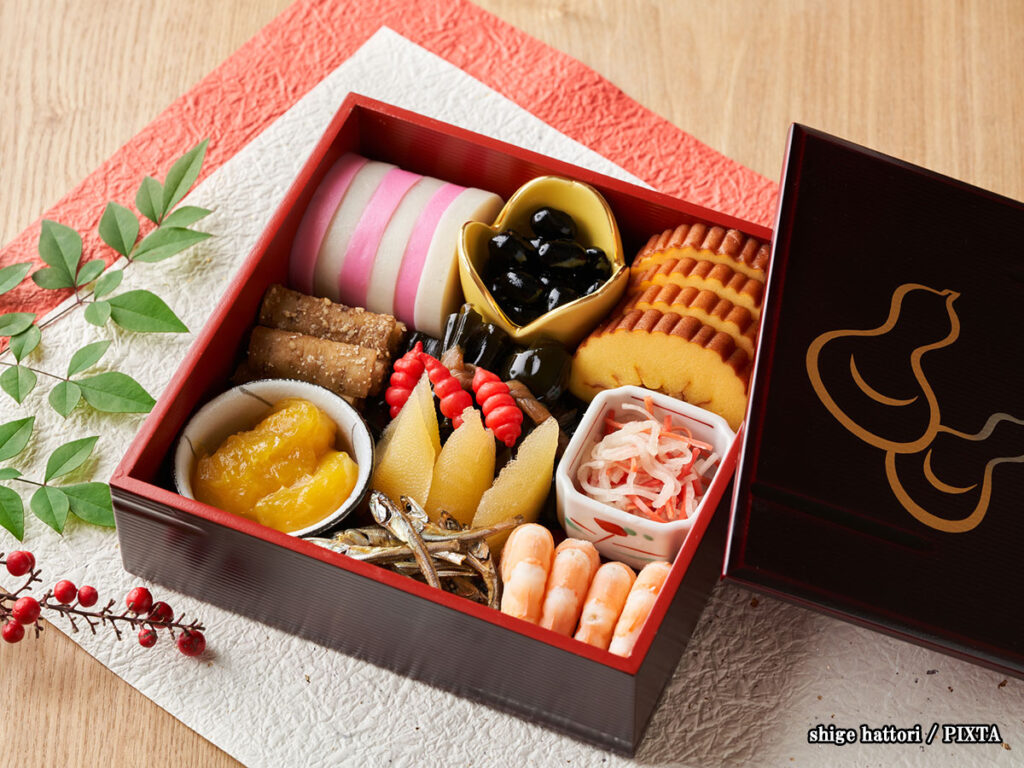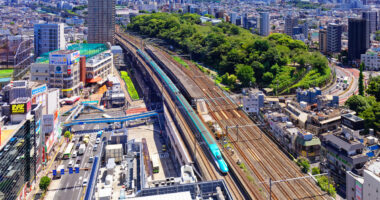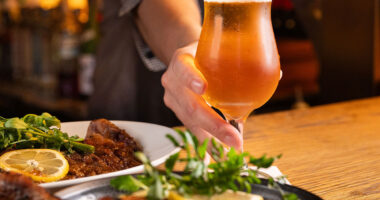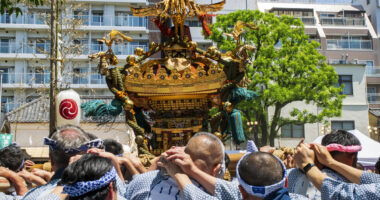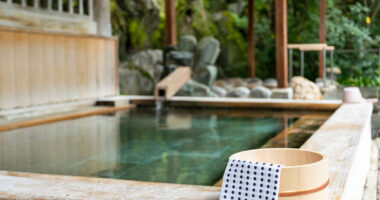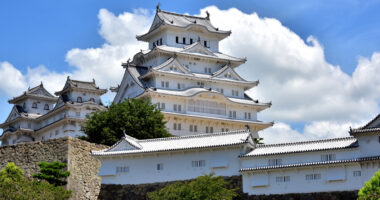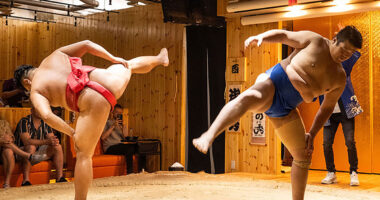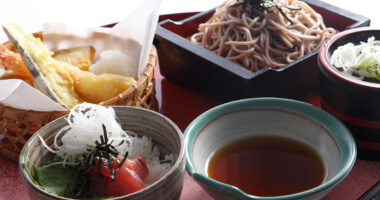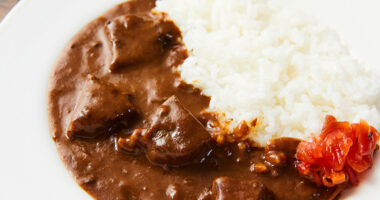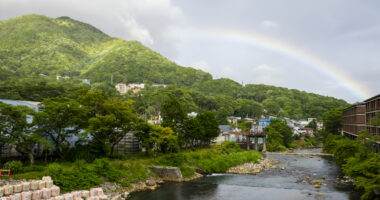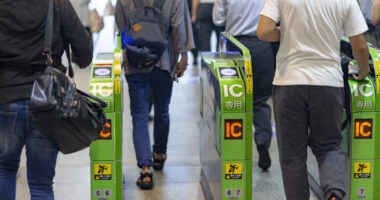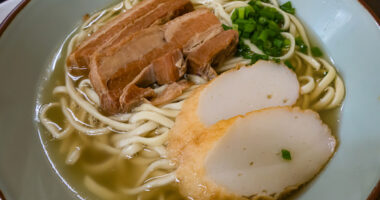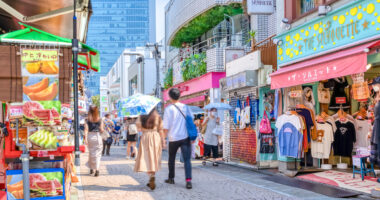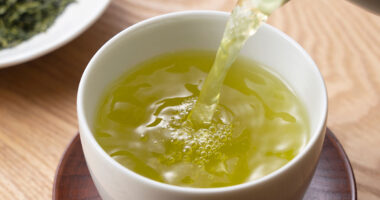As the end of December approaches and the year transitions into the next, Japan comes alive with traditions that mark the transition into the new year. From the end of December through the beginning of January, the country offers a unique combination of activities, food, and shopping experiences that create an unforgettable atmosphere for both locals and visitors. Here are some experiences you can enjoy if you’re spending the year-end and New Year time in Japan.
Year-End
Food
Toshikoshi soba (year-crossing soba)
Eating toshikoshi soba on New Year’s Eve is a popular custom believed to bring good luck for the coming year. The long, thin soba (buckwheat) noodles symbolize longevity and the ease of cutting off hardships from the previous year. You can find toshikoshi soba at many soba restaurants around Japan, and even some hotels offer special soba meals for guests.
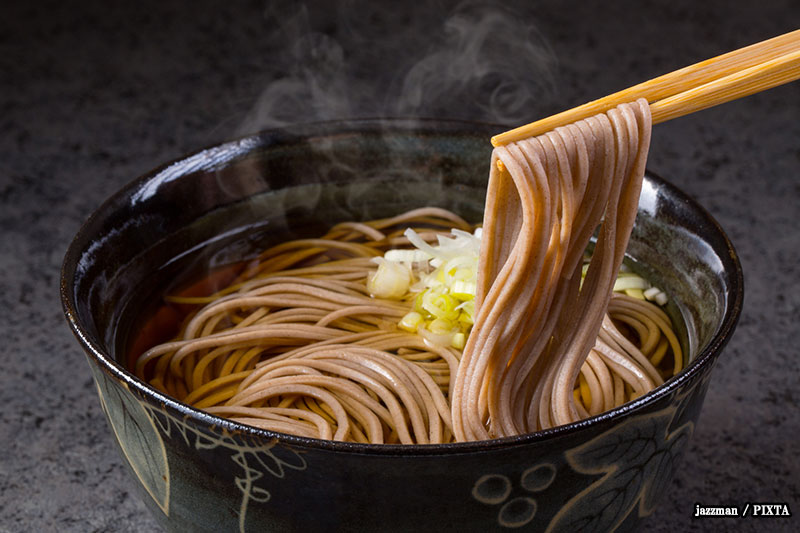
A hot bowl of soba noodles in broth (photo for illustrative purposes)
Activities
Joya no kane (temple bells)
On New Year’s Eve, Buddhist temples throughout Japan ring their bells 108 times to cleanse people of worldly desires and welcome the new year with a fresh mind. This practice, known as joya no kane (literally meaning “midnight bell”), typically begins late at night on December 31st and continues into the early hours of January 1st. The bells are rung 107 times before midnight and the final bell is rung after midnight. Many temples are open to the public on New Year’s Eve, allowing visitors to listen to the bell ringing, and in some cases, even participate by striking the bell themselves. Temples such as Chion-in in Kyoto, Tsurugaoka Hachimangū in Kamakura, Kanagawa Prefecture, and Zōjōji Temple in Tokyo are popular spots, though you may need to arrive early.
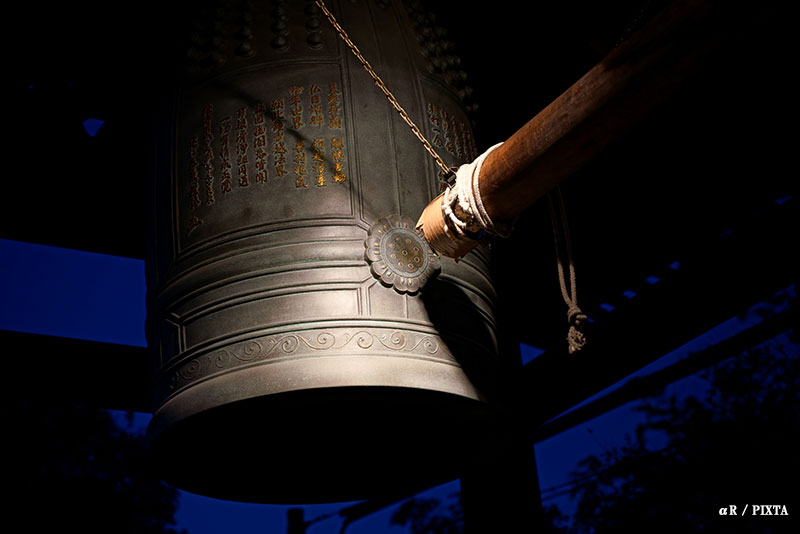
A bell at a Buddhist temple in Japan (photo for illustrative purposes)
Winter illuminations
Winter illuminations are a major attraction throughout Japan during the holiday season. You’ll find a wide variety of illuminations, not only within major cities like Tokyo but also within popular amusement parks throughout Japan. For a more intimate experience, consider visiting smaller displays in local parks or quieter towns, where you can enjoy the lights without large crowds.
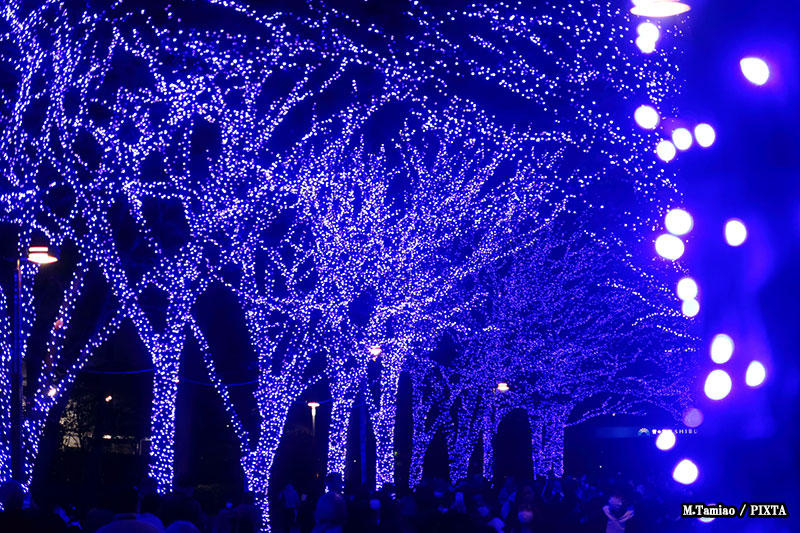
Winter illuminations in Japan (photo for illustrative purposes)
New Year
Food
Osechi ryōri (New Year’s cuisine)
Osechi ryōri is a beautifully arranged set of dishes often served in special lacquered boxes called jūbako. It features ingredients like grilled fish, shrimp, sweet rolled omelet, root vegetables, and pickled items, many of which have symbolic meanings for good fortune in the new year. Regional variations make osechi ryori a unique way to experience Japan’s culinary diversity, with different ingredients and flavors found across the country. You can try osechi at many hotels and restaurants, giving visitors a chance to enjoy this festive cuisine without needing to prepare it at home.
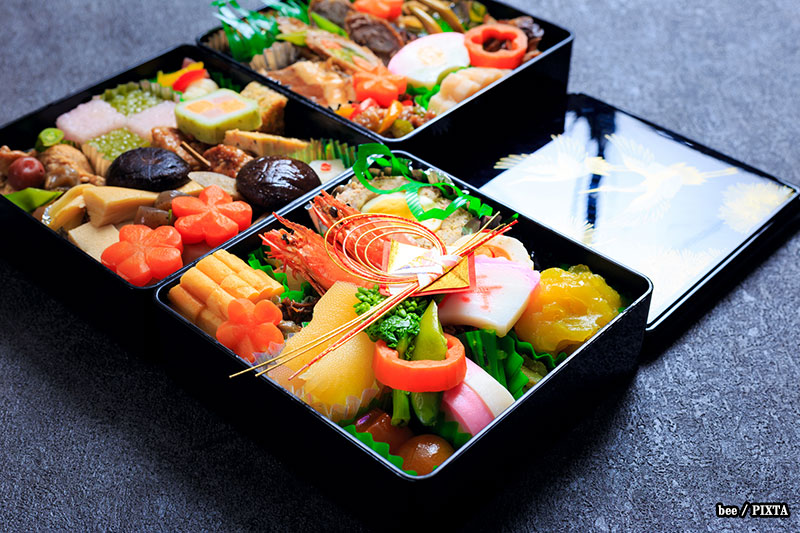
Beautifully arranged osechi ryori in a jubako box (photo for illustrative purposes)
Ozōni (New Year’s mochi soup)
Ozōni is a soup that contains mochi rice cakes and is typically eaten during the New Year period. The ingredients vary significantly by region, offering travelers a chance to taste unique local variations. In the Kansai area comprising Osaka and Kyoto, for instance, ozoni is often made with white miso, resulting in a sweeter flavor, while in Tokyo, it is commonly a clear broth with vegetables and chicken. Exploring regional differences adds a deeper cultural layer to the experience of tasting ozoni during New Year celebrations. You can try ozoni and many hotels and restaurants as well.
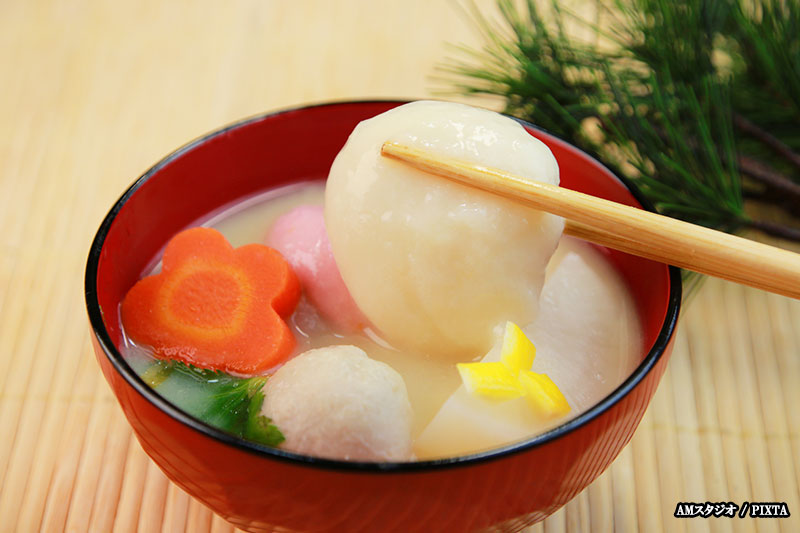
A bowl of Kansai-style ozoni (photo for illustrative purposes)
Activities
Hatsumōde (first shrine visit)
Hatsumōde, or the first shrine visit of the year, is a deeply ingrained New Year tradition in Japan. During the first few days of January, shrines and temples become crowded with people praying for health and happiness in the coming year. Famous locations like Meiji Shrine in Tokyo and Fushimi Inari Shrine in Kyoto attract millions. You can also consider exploring some smaller, local shrines that offer a more personal and quieter experience. Many neighborhood shrines have their own unique customs, such as offering special charms or smaller-scale festivities. For more about visiting shrines and temples in Japan, please see our article below:
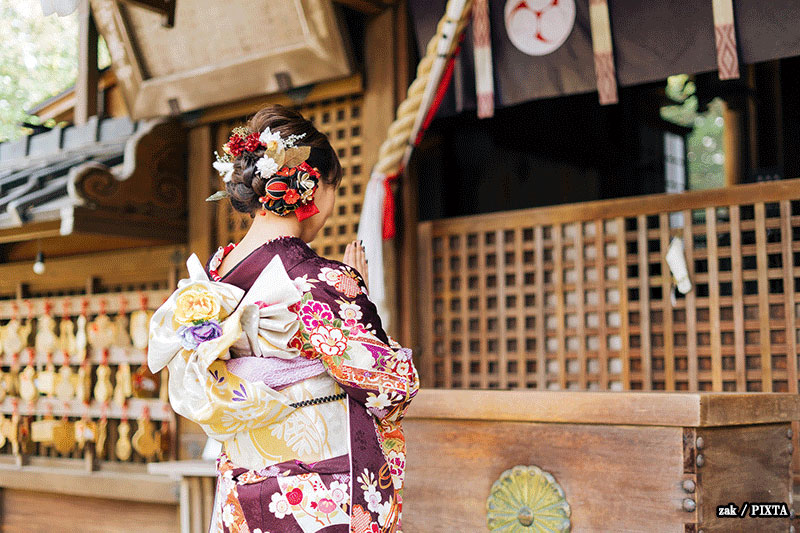
A Japanese woman making her first shrine visit of the new year (photo for illustrative purposes)
Hatsuhinode (first sunrise)
Watching the first sunrise of the new year, known as hatsuhinode, is another tradition to welcome good fortune. Many people gather at places with great views, such as Mt. Takao, or venture out to the eastern coast like Chōshi, Chiba Prefecture, and even the famous Mount Fuji, which are some of the first places in Japan to catch the sunrise. It’s a tranquil moment full of hope and new beginnings.
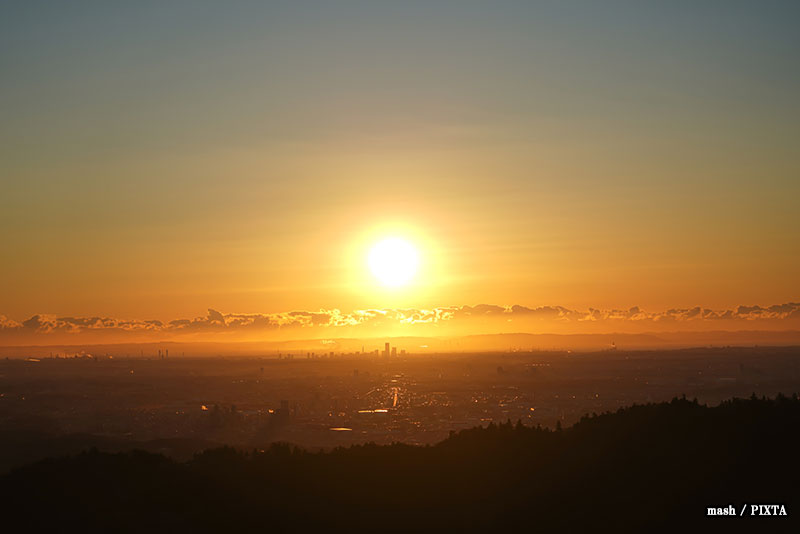
The first sunrise of the new year as seen from the summit of Mount Takao (photo for illustrative purposes)
Shishimai (lion dance)
The shishimai lion dance is performed during the New Year period to ward off evil spirits and bring good luck. You can find lion dance performances at Shinto shrines and Buddhist temples, as well as hotels, museums, and commercial areas like Tokyo Midtown, as well as regional events across Japan. Watching a shishimai dance is a lively way to enjoy Japanese culture’s festive and auspicious side. If a lion dancer tries to bite your head, don’t be afraid. It’s believed to protect you from disease and bring you good fortune!
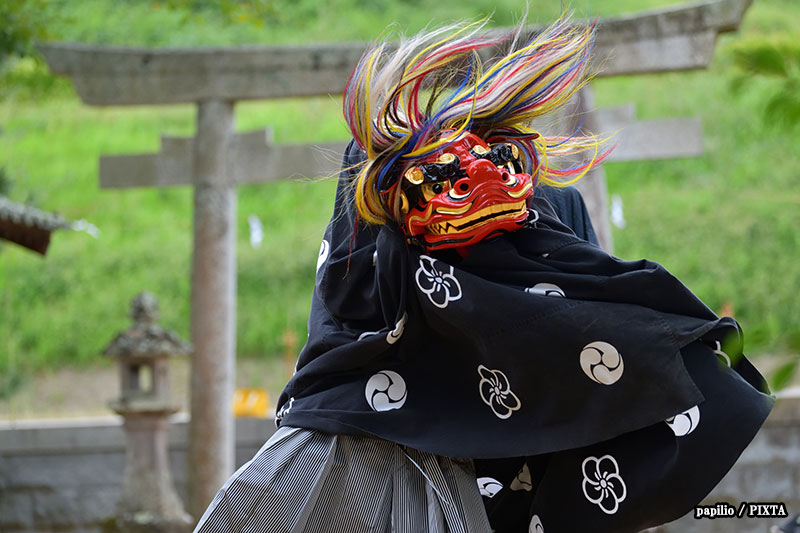
A shishimai lion dancer (photo for illustrative purposes)
Shopping
Fukubukuro (lucky bags)
Fukubukuro, or lucky bags, are sold by department stores, boutiques, and even cafes starting on January 1st. These grab bags contain a surprise mix of items, often valued much higher than the bag’s selling price. Look for the kanji characters 福袋 for fukubukuro often displayed on the bag and on signs. Buying a fukubukuro is a fun and exciting way to bring a little luck into your new year—and maybe snag some fantastic deals.
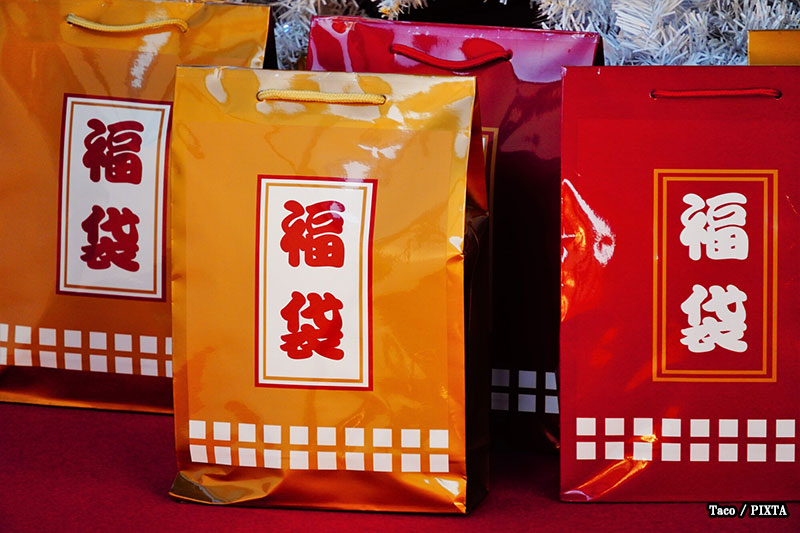
Fukubukuro bags lined up at a Japanese store during New Year’s (photo for illustrative purposes)
Hatsu-uri (first sales)
Many stores also hold hatsu-uri, the first sales of the year, which offer discounts and special promotions. These sales often attract shoppers looking to get great deals on a variety of items, from clothing to electronics, marking an exciting start to the new year for bargain hunters.
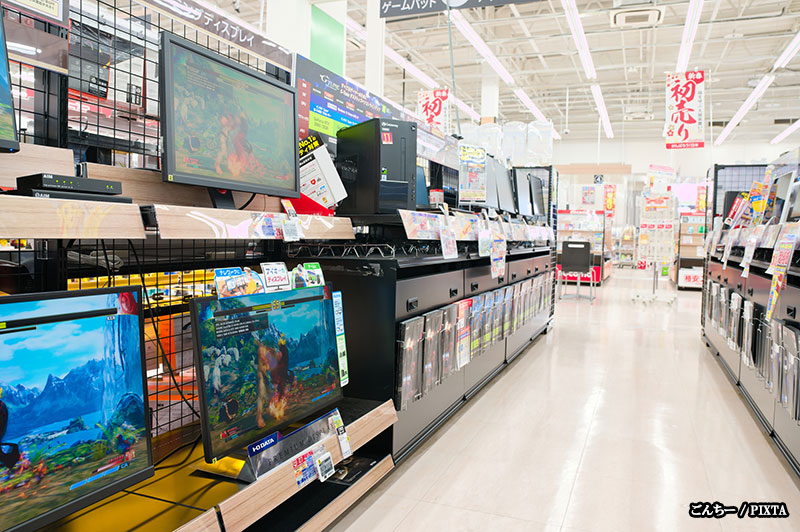
A Japanese electronics store having a hatsu-uri sale (photo for illustrative purposes)
Additional Notes
Holiday Closures
From December 28th to January 3rd, many restaurants and shops may be closed for the holidays. Be sure to check opening hours in advance to avoid any inconvenience.
Japan’s Year-End and New Year period is a fascinating blend of reflection, celebration, and hope. Whether you’re ringing in the new year at a shrine or temple, tasting osechi dishes, or trying your luck with a fukubukuro, there’s something special for everyone to experience.
